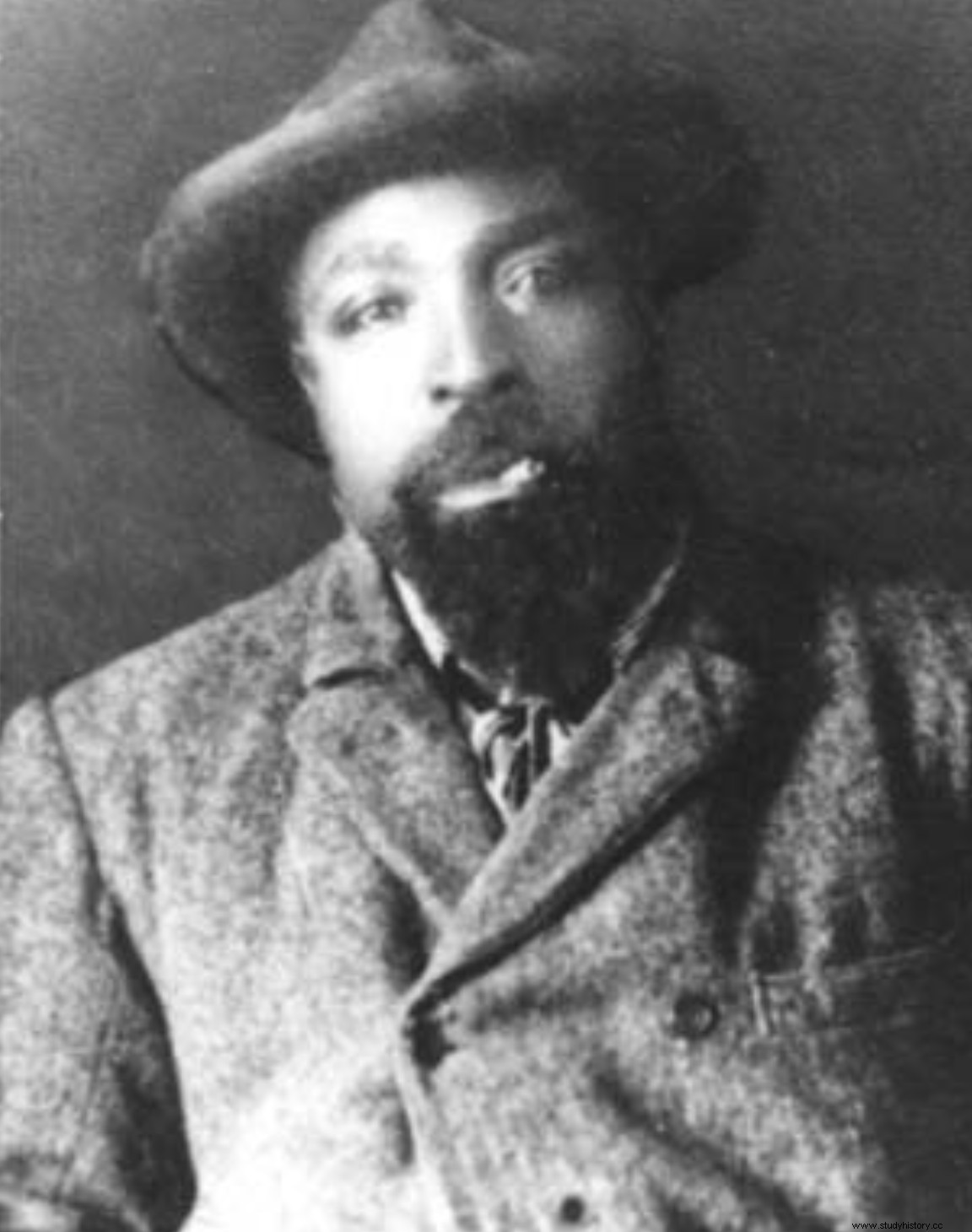
The wild west of North America evokes different images for everyone. You can think of tumbleweeds, salon doors or gunshots at noon. If you think about Clint Eastwood, Lone Ranger and other pop culture reproductions of cowboys. You might think of white colonists committing genocide against indigenous peoples and the laws that allowed them to do so. There are romanticized versions of the Wild West that portray white cowboys as gun hero heroes in the late 19th century, but the true, and often grim, story of cowboys like John Ware in the North American West is often forgotten.
To learn more about the colonization of North America, check out this post:https://www.yoair.com/blog/colonization-in-america-and-the-missing-colony-of-roanoke/
Who was John Ware?

John Ware was one of the first black people to live in western Canada. His name is known around the province where he lived, Alberta, but his name is unknown to the rest of the world. John Ware was a freed slave who became a folk hero in Canada. John Ware's name is on schools and maps, and he is often remembered as a myth more than a man. Legend has it that John Ware can stop a charging bull with his bare hands and hold a young stallion on his back so that it can be felt. But we should remember John Ware as a man. Ware was a father, husband, blacksmith and exemplary cowboy.
Ranch Hands
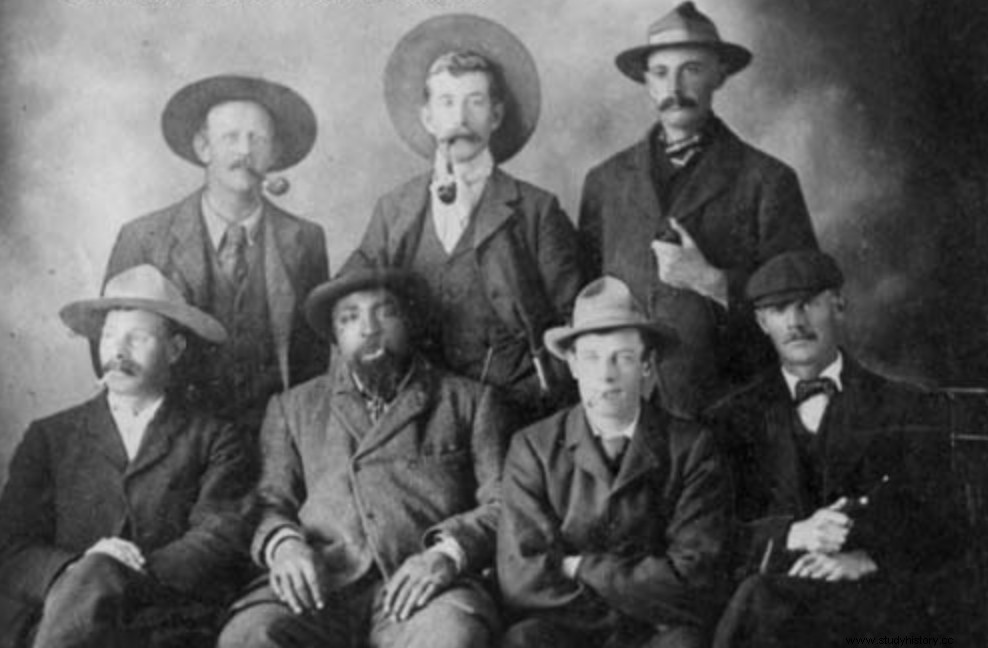
Cowboys, cowpunchers or cowhands were primarily ranch workers. Their main task was to transport cattle from the south, where it was cheap, to the north, where beef was more expensive. The lack of transport in the late 1800s meant that rangers had to transport cattle in flocks over large distances. White ranch hands who helped transport cattle preferred the term cowpuncher or cow hand because 'boy' was a degrading term used about slaves. So the term cowboy was originally reserved for black men, usually freed slaves, who held the same position. Except these cowboys do not appear in the movies.
Famous cowboys

The most famous cowboys representing expansion westward after the American Civil War are Billy the Kid and Jesse James. Cowboys are represented as white settlers who distribute vigilante justice in a lawless land of 'savages'. The fact is that most cowboys or cowpunchers were ranchers and cattle herders instead of gunslingers or vigilantes. The fact is that a quarter of all cowboys were black, but we do not see their stories with Lone Ranger or Clint Eastwood.
Black cowboys were unwritten from history and forgotten, especially in Canadian history. There are some famous black cowboys from the American South, such as Nate Love, Bass Reeves and Bill Pickett. Still, there were black cowboys in Canada as well. The most famous of them all was John Ware. John Ware was a man who found freedom and fame in the Canadian prairies of Alberta. Even most Canadians do not think of him or his American counterparts when they think of cowboys in the Wild West.
Nat Love, Bass Reeves and Bill Pickett
The lives of Nat Love, Bass Reeves and Bill Pickett are reasonably well documented. Each of them were former slaves who found an adventurous life in the hall.
Nat Love wrote his autobiography "The Life and Adventures of Nat Love", which he assures readers is completely factual and free of exaggeration. Love tells stories of his adventures as a shepherd of cattle through dangerous territory and taming wild horses to earn his nickname 'Deadwood Dick'.
Bass Reeves was the first black American Marshall west of the Mississippi River. Reeves is credited with around 3,000 arrests and was known for having an indestructible moral compass. Reeves was so straight laced that while protecting the law of the land that enslaved him, he arrested his own son. Because Reeves was quick to draw his gun in the name of justice, there is speculation that Reeves was the true inspiration for the Lone Ranger.
Bill Pickett invented 'control wrestling.' Apparently Pickett wanted to bite cattle like a shepherd dog and fight them to submission. Pickett is the first black man to be inducted into the Rodeo Hall of Fame in 1980.
These men lived adventurous lives that are spun into myths and legends to the point where the line between historical fiction and facts is blurred. Regardless of the fame of a select few, there are thousands of black cowboys whose stories have been left out of the history books. People completely John Ware was a man with many stories, some are more credible than others.
John Ware Comes to Canada
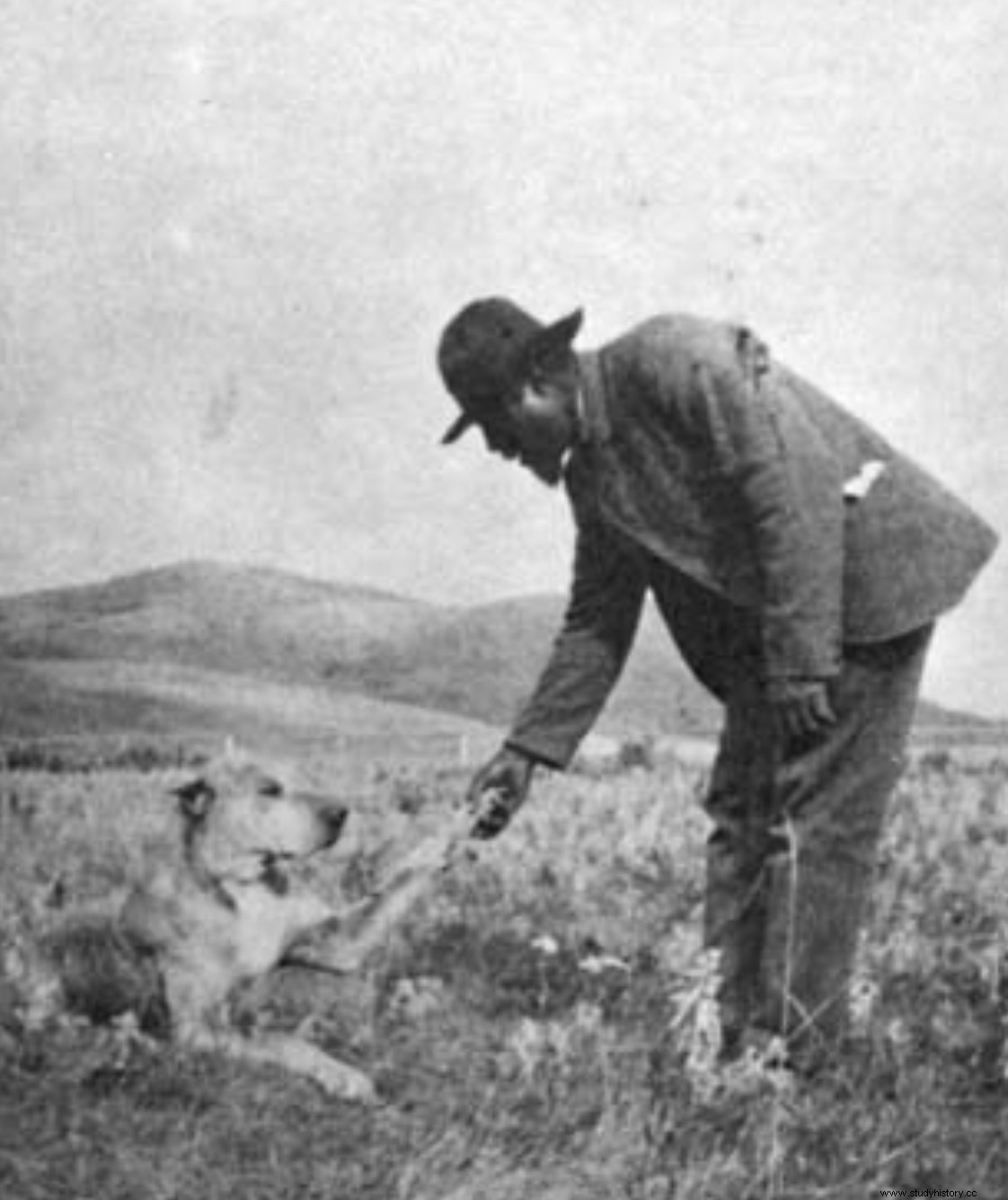
Cheryl Foggo is an expert on John Ware's life. Foggo grew up near the area where he lived and holds her story dearly in her heart. She is a filmmaker and historian who wrote a play called "John Ware:Reimagined", and then made a documentary called "John Ware:Reclaimed" in which she tries to separate facts from myths. To get a better picture of John Ware's story, check out the documentary here:https://www.nfb.ca/film/john-ware-reclaimed/
John Ware was born a slave somewhere in Tennessee in the summer of 1845. The birth of slaves was rarely recorded, so exactly where and when Ware was born is a mystery. Despite the mystery surrounding his origins, John Ware came to Canada in 1882.
Ware traveled to Alberta with a herd of cattle owned by Tom Lynch, a rancher from Idaho. Ware's reputation as an exceptional cowhand began on his journey. One story goes that Lynch originally gave Ware a small horse and a broken saddle, either because he thought Ware was inexperienced or because of the color of his skin. During the long trip to Alberta, Ware asked if he could have "a better saddle and a worse horse." So Lynch salted up the wildest horse he had and asked Ware to try it. With ease, Ware swung around the hall and controlled the bronchus like a real cowboy. When the farmers and their cattle arrived in Alberta, they encountered a snowstorm unlike anything they had experienced in the South.
Lynch and his cowboys ran to a ranch house for safety. Ware failed. After the snow settled, they went in search of Ware's body, only to find their cattle frozen and Ware alive and well with his cows in a fire. After Tom Lynch and his cowboys sold their cattle and returned home, Ware lived in Alberta and found love.
A family man

John Ware met a woman named Mildred Lewis. The Lewis family was a wealthy black family from Toronto who moved to Alberta a few years after Ware arrived. When Ware married Lewis, the Calgary Tribune wrote
“The bride is of a happy attitude, well-mannered and accomplished. And probably no man in the district has a greater number of warm personal friends than the groom, Mr. John Ware. ”
The couple formed an exceptional team when Ware was stubborn and knowledgeable, while Lewis could read, write and keep a general ledger. Together, they built a farmhouse in an area called Sheep Creek, Alberta. They had six children together and lived happy, prosperous lives. Their eldest daughter, Janet Ware, kept photographs and documents about their family and history. At the height of their wealth, they had over 200 cattle.
It's a temptation when we talk about John Ware to just mention the strange stories that make him seem like a myth. However, it is important to remember that he was a man just like everyone else. Ware was a father and a husband, as well as being a cowboy whose story is surrounded by exaggeration and racism.
John Ware's Cow Country
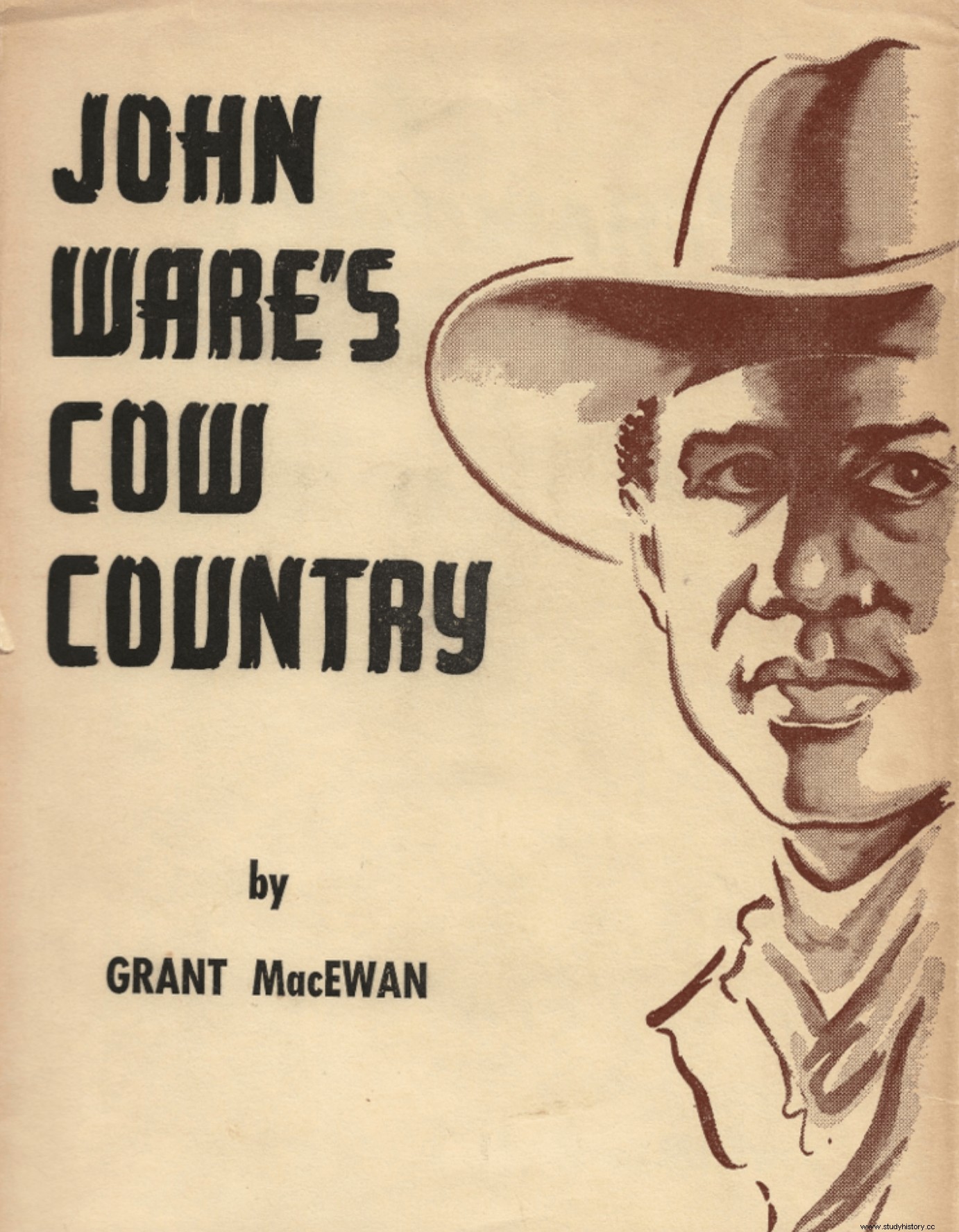
There are different stories about John Ware, but the only complete biography of his life is called "John Ware's Cow Country" by Grant MacEwan. A story about John Ware says that he joined a group of travelers when they were to camp for the night near a stream. The sky was clear, but Ware felt that a better place to camp would be high up on a hill, where they fed the horses. That night there was a big thunderstorm and in the morning some of the travelers went to check out the creek. They found what would have been their campsite under five feet of water, and credited John Ware for saving their lives.
There are stories that he saved lives by predicting a flood, breaking a charging bull to the ground and pulling a cart with people into the city when the horse broke a bone. Some of these stories make Ware seem bigger than life, a legendary cowboy. However, some of these stories make Ware seem more like an animal than a man.
In 1960, when MacEwan wrote his book, he had perhaps the best of intentions. MacEwan may have wanted to preserve the story of a great man, but the way he wrote his stories depends on racist, discriminatory stereotypes. Parts of MacEwan's book are accurate because he talked to people who actually knew John Ware, but most of what he has exaggerated, and it can be difficult to tell the difference. Despite the fact that the stories about John Ware portray him as a respected and capable man, Ware had to fight discrimination in his life and legacy.

John Ware Ridge
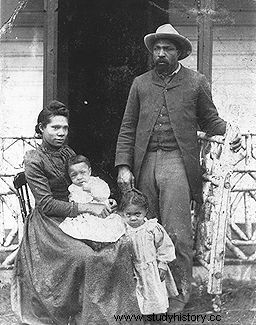
It's a story about John Ware and his white friend traveling to Alberta's capital, Calgary. The two men came, went to a bar and sat waiting for service. The bartender served everyone else, cleaned the glasses and dried the bar. When Ware called him to order a drink, he gave a common answer:"I do not serve n——." Then Ware jumped over the bar and threw the bartender out the front door. Then he served free drinks to everyone at the bar. The bartender called the police and Thei pulled John was gone.
Vare mas born slaves and rose to a respected position in society, but he had to fight discrimination all his life. After his death in 1905, Alberta named several places and buildings after him. The Canadian government wrote on mapping titles such as 'N—- John Ridge.' It was not until the 1970s that Aty changed the names of landmarks to 'John Ware Ridge' and 'John Ware Junior High.' In 2012, the Canada Post made a John Ware stamp with his face on it. The Treg government changed its name from their racist and derogatory versions. But people, especially Canadians, should not forget how recently the government made these changes. He was a respected and successful person who gained the status of a folk hero, but he was still a man who faced discrimination during and after life.
To find out more about John Ware, check the entry in the Canadian Encyclopedia by clicking this link:https://www.thecanadianencyclopedia.ca/en/article/john-ware
Remember John Ware
John Ware was Canada's most prominent black cowboy whose life shows us today how the American West and the Canadian West are not as different as some would think. It is a misconception in North American history that the experience of black Canadians and black Americans was drastically different. People perceive and stereotype Canada as a place where everyone is welcoming and friendly, a country where racism does not exist as it does in the United States. The problem with the national narrative is what it did and still does. As you romanticize the adventures of cowboys in the Wild West of North America, remember the real people who lived that life and what they had to endure. When you think of the Wild West, you may think of Clint Eastwood and the Lone Ranger, but hopefully you will remember John Ware as well.
To learn more about historical figures you should know, check out these links!
- Southern Rock Music Genre is from a Beatles cover
- Sanxingdui:A Lost Civilization in Ancient China
- Anthropology:Fundamentals of Indian Culture and Traditions
- Blue and white ceramics from Delft, the Netherlands:An introduction
- Current events:The pandemic highlights society's need for food banks
